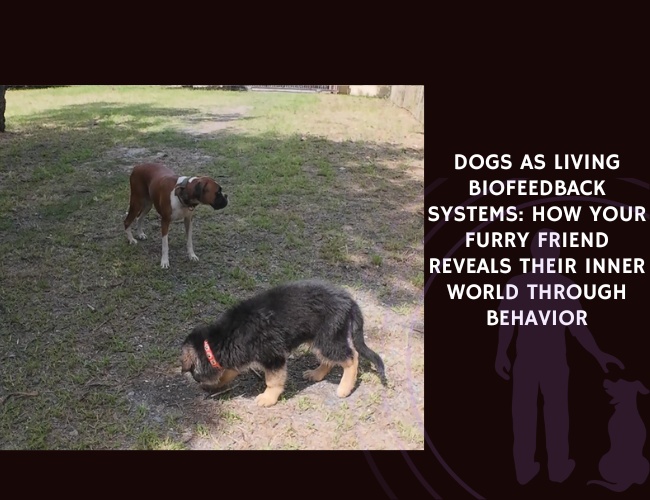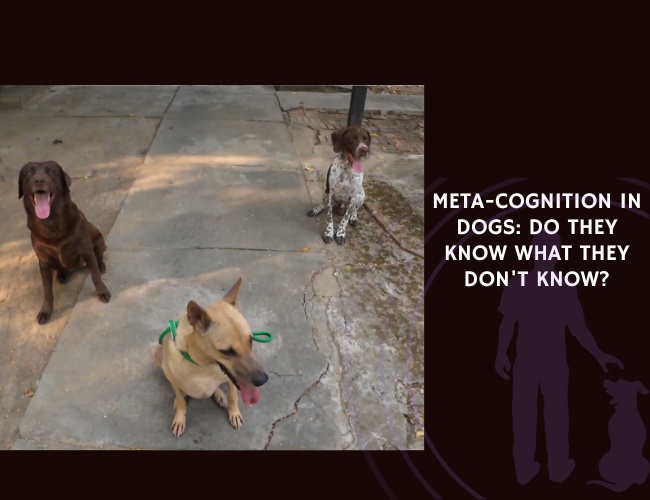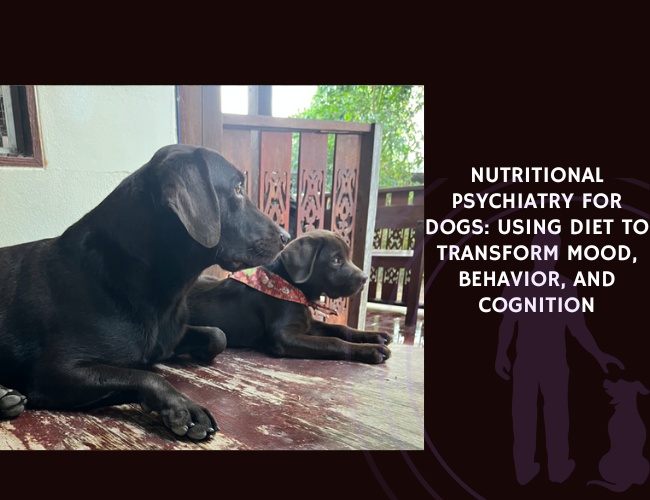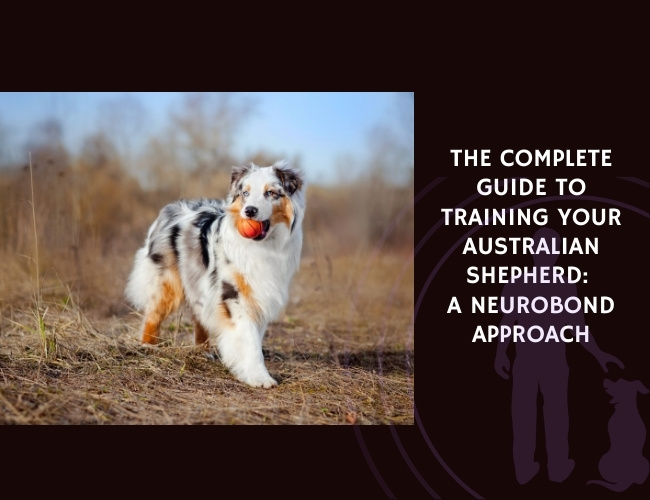Have you ever watched your dog yawn during a vet visit and wondered if they were actually tired? Or noticed them licking their lips when meeting a new person, even though no treats were in sight? These seemingly simple behaviors are actually sophisticated windows into your dog’s internal state—a complex biofeedback system that’s been refined over thousands of years of evolution alongside humans. Let us guide you through the fascinating science of how your canine companion communicates their invisible feelings, thoughts, and even physical health through every wag, whine, and wiggle.
Introduction
Understanding the biofeedback connection between dogs and humans
Your dog’s behavior isn’t just random actions—it’s a sophisticated communication system that reflects what’s happening inside their body and mind. Think of it as your pup’s personal dashboard, constantly displaying vital information about their physiological and emotional states. Every tail position, ear movement, and even that curious head tilt tells a story about what’s happening beneath the fur.
The relationship between you and your dog is more than companionship—it’s a sophisticated dance of biological synchronization. Research has revealed that dogs, particularly those bred for human cooperation like herding breeds, can actually mirror their owner’s long-term stress levels. This means your furry friend isn’t just living alongside you; they’re emotionally and physiologically attuned to your internal state, creating a remarkable two-way biofeedback system.
Character & Behavior
Understanding how your dog’s actions reveal their inner world
When your dog exhibits certain behaviors, they’re actually showing you real-time data about their autonomic nervous system, stress hormones, and even cognitive processing. Research has revealed that dogs express displacement behaviors—like sniffing, yawning, and lip-licking—more frequently in ambiguous social situations where they’re trying to predict what might happen next. This means that innocent-looking yawn during your dinner party might actually be your dog saying, “I’m not sure what’s expected of me right now.”
The Science Behind the Signals Every behavior your dog displays has roots in their evolutionary history and physiological state. That sudden scratch when nothing seems itchy? It might be your dog’s way of managing internal stress. The “shake-off” after meeting a new dog? That’s their nervous system literally resetting itself. Understanding these connections transforms you from a casual observer into an informed interpreter of your dog’s internal experience.
Reading the Subtle Signs The most reliable behavioral indicators of internal states include both obvious and subtle cues. While we might easily notice a tucked tail indicating fear, did you know that excessive blinking or nose-licking can signal mild stress or uncertainty? These behaviors act as your dog’s way of processing and communicating their internal experience. Understanding these signals transforms you from a pet owner into a true companion who can respond to your dog’s needs before they escalate into bigger issues.
Key Behavioral Indicators to Watch:
- Displacement behaviors – Sudden scratching, yawning, or ground-sniffing when nothing seems to warrant it often signals internal conflict or mild stress processing
- Facial expressions – Lip-licking, excessive blinking, or dilated pupils can indicate anxiety or uncertainty even when the rest of the body appears calm
- Body positioning – Weight shifting, turning away, or freezing in place reveals discomfort or cognitive processing that might otherwise go unnoticed
- Micro-movements – Small ear flicks, tiny tail adjustments, or slight changes in breathing patterns often precede larger behavioral responses
- Vocalizations – Changes in bark pitch, unexpected whining, or unusual silence can all indicate shifts in internal state before other signs appear
When Signals Become Concerning Sometimes, these subtle behavioral signals can escalate into patterns that affect your dog’s quality of life. A dog who occasionally paces when anxious might develop compulsive pacing if the underlying stress isn’t addressed. By learning to read these early warning signs, you’re essentially becoming fluent in your dog’s biofeedback language, allowing you to intervene before small concerns become significant behavioral challenges. 🐾
Vocalization & Communication
How stress manifests through your dog’s body language and sounds
Your dog’s stress response system is remarkably similar to your own, involving the same hypothalamic-pituitary-adrenal (HPA) axis and autonomic nervous system that regulate human stress. When your furry friend experiences stress, their body releases cortisol and their heart rate variability changes—invisible processes that manifest as visible behaviors you can learn to recognize.
The Physiological Dance of Stress When stress hormones surge through your dog’s system, they create a cascade of physical responses. Their heart rate increases, muscles tense, and their digestive system may slow down. These internal changes drive external behaviors: that sudden scratching when nothing seems itchy, the “shake-off” after meeting a new dog, or the refusal to eat their favorite treat during a thunderstorm. Each behavior is your dog’s body attempting to regulate and communicate its internal state.
Feedback Loops: How Stress Builds on Itself Here’s where things get particularly interesting—stress behaviors can create self-reinforcing cycles. When your dog feels stressed and begins panting excessively, the physical act of panting can actually increase their arousal level, potentially escalating their stress response. Understanding these feedback loops helps you intervene effectively. For instance, redirecting your anxious dog to a calming activity like gentle sniffing games can break the cycle before it spirals.
Common Stress Feedback Loops to Interrupt:
- Panting-arousal cycle – Excessive panting increases oxygen intake and heart rate, which can heighten anxiety rather than relieve it, requiring calm breathing exercises or cool-down strategies
- Pacing-tension loop – Repetitive pacing builds muscle tension and mental agitation, best interrupted with structured activities like “find it” games or gentle massage
- Vigilance-exhaustion pattern – Constant environmental scanning depletes mental resources while increasing stress hormones, necessitating quiet time in a safe space
- Vocalization-escalation cycle – Barking or whining can self-reinforce through adrenaline release, requiring redirection to incompatible behaviors like holding a toy
- Avoidance-fear strengthening – Avoiding triggers without positive exposure can intensify fear responses over time, calling for gradual desensitization protocols
The Mirror Effect: When Dogs Reflect Our Stress Perhaps one of the most remarkable discoveries in canine science is that dogs can synchronize their long-term stress levels with their owners. Studies measuring hair cortisol concentration have shown that herding dogs, particularly those bred for close human cooperation, literally mirror their owner’s stress patterns. This means your relaxed tail wag or tense body language doesn’t just affect you—it ripples through to your four-legged companion. Your dog isn’t just living with you; they’re emotionally attuned to your internal state, making them a living, breathing biofeedback system for the entire household. 🧡
Training & Education
Adapting your approach based on real-time behavioral feedback
Understanding your dog as a biofeedback system revolutionizes training from a one-size-fits-all approach to a responsive, individualized conversation. By reading your dog’s behavioral signals in real-time, you can adjust your training methods to match their current emotional and cognitive state, dramatically improving both learning outcomes and the human-canine bond.
Timing Is Everything: Reading Readiness Signals Your dog’s body constantly broadcasts their readiness to learn. Those soft, forward-facing ears, relaxed tail position, and gentle eye contact? That’s your green light for introducing new concepts. But when you notice lip-licking, yawning, or sudden ground-sniffing during a training session, your dog is telling you they need a break or a change in approach. Skilled trainers learn to read these signals like a conductor reads an orchestra, adjusting tempo and intensity to maintain optimal learning conditions.
Stress Load Management Every dog has a stress threshold—a point where learning stops and survival mode begins. By monitoring biofeedback cues, you can keep training sessions in the sweet spot where challenge meets capability. Notice your dog’s breathing becoming shallow or their movements becoming either sluggish or hyperactive? These are signs you’re approaching or exceeding their stress capacity. Reducing the difficulty, adding more rewards, or simply taking a play break can reset their system and restore learning readiness.
Personalized Reinforcement Strategies Not all dogs find the same things rewarding, and their biofeedback signals can guide you to what truly motivates them. Some dogs show increased focus and calm alertness with food rewards, while others might display excitement signals that actually interfere with learning. By observing how different reinforcement types affect your dog’s behavioral signals—from tail position to breathing patterns—you can customize your reward system for maximum effectiveness. This individualized approach transforms training from a task to be endured into an engaging dialogue between two species.
Training Adjustments Based on Biofeedback Signals:
- High arousal indicators (jumping, inability to maintain position, dilated pupils) – Switch to calmer rewards like praise or gentle petting, increase distance from triggers, or add more steps between rewards
- Shutdown signals (excessive yawning, looking away, slow responses) – Reduce training difficulty immediately, use higher-value rewards, or take a play break to reset emotional state
- Confusion markers (head tilting, hesitation, displacement behaviors) – Break down the task into smaller steps, use clearer body language, or return to a previously mastered skill for confidence building
- Optimal learning signs (soft eye contact, alert but relaxed posture, quick responses) – This is your green light to introduce new concepts or increase difficulty gradually
- Fatigue indicators (slower movements, decreased accuracy, seeking distance) – End on a positive note with an easy win, as mental fatigue impairs learning retention
- Stress accumulation (lip licking, panting without physical exertion, trembling) – Stop training and engage in calming activities like sniffing or gentle massage to prevent negative associations

Performance & Activities
Reading cognitive abilities through problem-solving behaviors
Watch your dog figure out how to get a treat from a puzzle toy, and you’re witnessing more than just problem-solving—you’re observing a window into their emotional regulation, frustration tolerance, and unique learning style. These cognitive behaviors serve as diagnostic tools that reveal how your dog processes challenges and manages their emotional responses.
Frustration Tolerance in Action When your dog encounters a challenging puzzle or a training task that doesn’t immediately yield results, their response tells you volumes about their emotional regulation abilities. Dogs with strong frustration tolerance might try different approaches, take breaks to reassess, or calmly persist. Others might show displacement behaviors like excessive sniffing or suddenly needing to scratch—their way of managing internal cognitive conflict. These patterns aren’t character flaws; they’re valuable information about how your individual dog processes stress and challenge.
Error Correction as a Learning Window Notice how your dog responds when they make a mistake during training? Some dogs immediately try again with a modified approach, while others might hesitate or even avoid the situation entirely. This hesitation or avoidance isn’t “stubbornness”—it’s your dog externalizing their internal cognitive processing. Dogs who pause before reattempting a task might be mentally rehearsing, while those who avoid might be protecting themselves from the stress of potential failure. Understanding these patterns helps you tailor training approaches to your dog’s unique cognitive style.
Externalizing Internal Conflict Dogs can’t tell us when they’re torn between competing desires or confused about what we’re asking, but they show us through specific behavior patterns. That moment when your dog looks back and forth between you and the squirrel they desperately want to chase? That’s cognitive conflict made visible. The displacement behaviors—sudden grooming, ground sniffing, or the “zoomies” after a particularly challenging training session—are all ways your dog externalizes and processes internal mental challenges. Recognizing these moments helps you provide appropriate support and adjust your expectations. 😄
Nutritional Recommendations
How diet affects behavioral signals and stress responses
What your dog eats directly impacts their ability to manage stress and communicate through behavior. The gut-brain axis—the biochemical signaling between the gastrointestinal tract and the nervous system—plays a crucial role in your dog’s emotional regulation and behavioral expression. Understanding this connection helps you optimize your dog’s diet to support clearer behavioral communication.
The Nutrition-Behavior Connection Certain nutrients directly influence neurotransmitter production and stress hormone regulation. For instance, tryptophan, found in turkey and eggs, is a precursor to serotonin—the “feel-good” neurotransmitter that helps regulate mood and stress responses. Dogs fed diets lacking in essential fatty acids may show increased anxiety behaviors and decreased ability to cope with stress. By ensuring proper nutrition, you’re literally feeding your dog’s ability to communicate clearly through behavior.
Reading Hunger and Satiety Signals Your dog’s relationship with food provides valuable biofeedback about their overall health and stress levels. Changes in appetite, eating speed, or food preferences often precede other behavioral or health indicators. A dog who suddenly becomes a picky eater might be experiencing dental pain, digestive issues, or elevated stress levels. Conversely, stress-eating or food-seeking behaviors can indicate emotional dysregulation that needs addressing through environmental or training modifications rather than dietary changes alone.
Health Concerns
Recognizing pain and illness through behavioral changes
One of the most crucial applications of understanding your dog as a biofeedback system is recognizing pain and illness before they become obvious. Dogs are masters at hiding discomfort—an evolutionary trait from their wild ancestors—but subtle behavioral changes can alert observant owners to developing health issues.
The Subtle Language of Discomfort Long before your dog shows obvious limping or crying, they’re likely displaying subtle behavioral changes that indicate pain or illness. A dog with early arthritis might hesitate slightly before jumping onto their favorite couch, or they might shift their weight imperceptibly while standing. Changes in sleep patterns, such as restlessness or choosing different sleeping positions, often precede visible signs of discomfort. Even something as simple as a decreased tail wag amplitude or a slightly slower response to their name being called can signal that something’s not quite right internally.
Early Warning Signs of Pain or Illness:
- Movement changes – Hesitation before jumping, slower sit-to-stand transitions, or preferring one side when lying down may indicate developing joint issues
- Behavioral shifts – Decreased interest in play, seeking solitude more often, or unusual clinginess can signal internal discomfort before obvious symptoms
- Eating and drinking patterns – Approaching food differently, drinking more or less water, or changing chewing patterns might reveal dental pain or digestive issues
- Grooming alterations – Over-grooming specific areas, neglecting regular grooming, or sensitivity when being petted in certain spots often indicates localized pain
- Sleep disruptions – Difficulty settling, frequent position changes, or unusual sleeping locations may suggest your dog is trying to manage physical discomfort
- Subtle gait changes – Slightly shorter strides, reduced tail movement while walking, or mild stiffness after rest can precede visible lameness
Why We Miss the Messages Research shows that even experienced dog handlers, including those working with psychiatric service dogs, often struggle to recognize subtle stress and pain signals. We tend to attribute behavioral changes to aging, “grumpiness,” or personality quirks rather than potential health issues. A dog who becomes less enthusiastic about walks might be labeled as “lazy” when they’re actually experiencing joint pain. This misinterpretation can delay necessary veterinary care and inadvertently allow suffering to continue.
The Future of Monitoring: Technology Meets Intuition Imagine if your dog’s collar could tell you their heart rate variability, activity levels, and even stress indicators throughout the day. This isn’t science fiction—wearable technology for dogs is rapidly advancing, offering continuous monitoring that can detect subtle changes in movement patterns, rest quality, and physiological markers. These devices don’t replace your intuition but rather augment it, providing objective data that confirms what you might suspect or reveals issues you might have missed. Combined with your knowledge of your dog’s behavioral patterns, this technology creates a comprehensive biofeedback system that ensures nothing goes unnoticed. 🧠
Attuned. Expressive. Transparent.
Behaviour mirrors biology. Every wag, yawn, or shake-off reflects inner states, turning dogs into living dashboards of emotional and physiological data.
Signals reveal uncertainty. Lip-licks, scratches, or displacement yawns aren’t quirks—they’re coping strategies, expressing stress and ambiguity in real time.


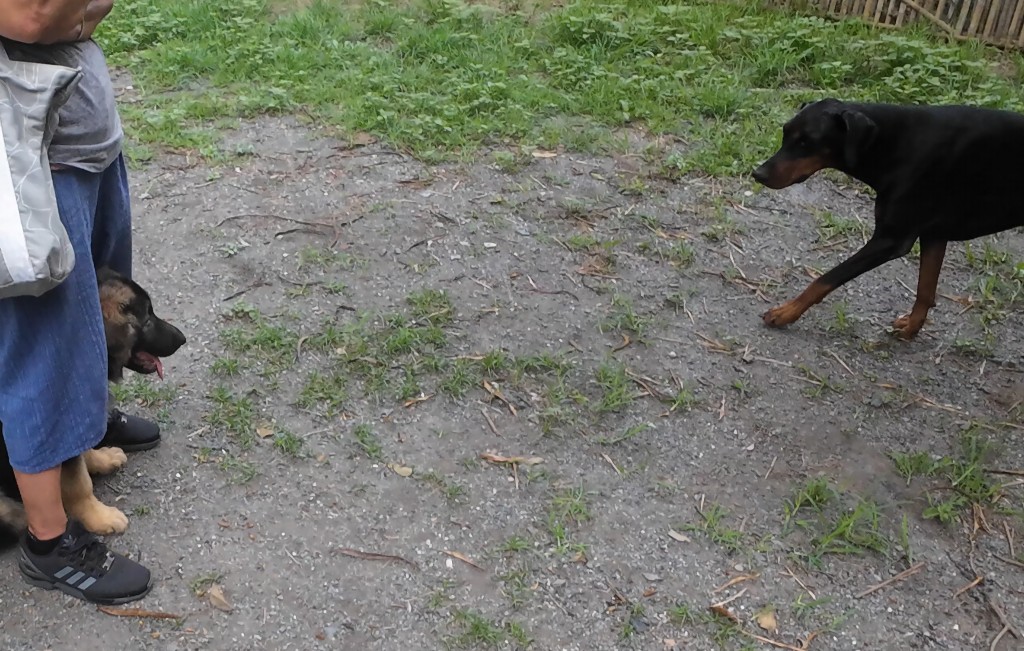
Bond builds biofeedback. Through shared stress and synchronised emotions, dogs and humans form a two-way system where behaviour translates hidden inner worlds.
Lifestyle & Environment
Creating spaces that support clear behavioral communication
Your dog’s environment profoundly influences their internal state and, consequently, their behavioral signals. Understanding this relationship helps you create spaces and routines that support your dog’s emotional and physical wellbeing while making their biofeedback signals easier to read and interpret.
The Space-Stress Connection Environmental factors directly impact your dog’s stress physiology. A cluttered, noisy environment can maintain elevated cortisol levels even when no immediate threat exists. Conversely, spaces with predictable layouts, comfortable resting areas, and controlled sensory input promote parasympathetic nervous system activation—the “rest and digest” state. Watch how your dog’s displacement behaviors decrease in familiar, well-organized spaces versus new or chaotic environments. This isn’t just preference; it’s their nervous system responding to environmental cues.
Social Environment as a Regulatory Force The social dynamics in your household create an invisible emotional ecosystem that your dog constantly navigates and responds to. Multi-dog households often show fascinating biofeedback cascades, where one dog’s stress signals can trigger sympathetic responses in others. Similarly, the presence of a calm, confident dog can help regulate a more anxious companion’s nervous system. Understanding these social feedback loops helps you manage group dynamics and recognize when behavioral issues might stem from social stress rather than individual problems.
Routine as a Stabilizing Framework Predictable routines don’t just make life easier—they fundamentally alter your dog’s physiological baseline. Dogs with consistent schedules show more stable heart rate variability patterns and lower baseline cortisol levels. This physiological stability makes it easier to detect when something is amiss. A dog who suddenly shows stress signals during their usually relaxing evening routine is providing clear feedback that something in their internal or external world has changed. This could range from developing physical discomfort to sensing environmental changes you haven’t yet noticed.
Senior Care
Monitoring age-related changes through behavioral observation
As your dog ages, their biofeedback signals evolve, requiring adjusted interpretation and response strategies. Senior dogs face unique challenges—from cognitive changes to chronic pain—that manifest through subtle behavioral shifts long before they become clinically obvious. Understanding these age-related patterns helps you provide proactive care that maintains quality of life throughout your dog’s golden years.
Cognitive Changes and Behavioral Indicators Canine cognitive dysfunction, similar to dementia in humans, often begins with subtle behavioral changes that owners might dismiss as “normal aging.” Your senior dog might start showing confusion in familiar environments, altered sleep-wake cycles, or changes in social interactions. These aren’t just quirks of old age—they’re your dog’s brain communicating its changing needs. Early recognition of these signals allows for interventions that can slow cognitive decline and maintain mental function.
Pain Management in Senior Dogs Older dogs are masters at compensating for chronic pain, often hiding discomfort until it becomes severe. Watch for subtle changes like taking a slightly different route to their favorite spot, spending more time “thinking” before jumping down from furniture, or showing less enthusiasm for activities they once loved. These compensatory behaviors are your dog’s attempt to manage pain while maintaining their normal routine. Recognizing these patterns early enables proactive pain management that preserves mobility and joy.
Adapting Your Response to Senior Signals Senior dogs require a recalibrated approach to reading their biofeedback signals. What might indicate mild stress in a younger dog could represent significant discomfort in a senior. Their reduced ability to regulate body temperature, decreased sensory acuity, and slower processing speed all affect how they communicate through behavior. Patience, increased observation, and adjusted expectations allow you to maintain clear communication with your aging companion while supporting their changing needs.
Advanced Recognition Skills
Becoming fluent in your dog’s behavioral language
Developing expertise in reading your dog’s biofeedback signals is a journey that combines scientific understanding with intuitive observation. As you become more attuned to your dog’s behavioral language, you’ll discover layers of meaning in actions you once considered random or insignificant.
Building Your Observation Skills Start by establishing baseline behaviors for your individual dog. What does their relaxed tail position look like? How do they hold their ears when genuinely curious versus mildly stressed? Create a mental or physical catalog of your dog’s signals across different emotional states. This personalized behavior library becomes your reference guide for detecting subtle changes. Remember, every dog is unique—what signals stress in one might indicate excitement in another.
The Context Factor Behavioral signals never exist in isolation—context is everything. A yawn in the morning likely means tiredness, but the same yawn in the vet’s waiting room signals stress. Ground-sniffing during a walk might be information gathering, but sudden ground-sniffing during training often indicates cognitive overload. Learning to read behaviors within their environmental and situational context transforms you from a casual observer to a skilled interpreter of your dog’s internal states.
Integration of Multiple Signals Expert reading of canine biofeedback involves synthesizing multiple behavioral signals simultaneously. Rather than focusing on single behaviors, observe patterns: ear position plus tail height plus breathing rate plus muscle tension. This holistic assessment provides a more accurate picture of your dog’s internal state than any single signal could offer. It’s like reading sentences rather than individual words—the complete message emerges from the combination of elements. 🧡
Technology & Future Directions
The digital revolution in canine care
The intersection of technology and canine behavioral science is creating unprecedented opportunities to understand and respond to our dogs’ internal states. From AI-powered behavior analysis to real-time physiological monitoring, we’re entering an era where the invisible becomes visible and the subtle becomes obvious.
Wearable Tech: Your Dog’s Personal Health Tracker Modern canine wearables go far beyond simple activity tracking. Advanced sensors can monitor heart rate variability, sleep quality, respiratory patterns, and even stress indicators through skin conductance. These devices create continuous data streams that reveal patterns invisible to human observation. Imagine receiving an alert that your dog’s stress levels have been gradually increasing over the past week, allowing you to investigate and address issues before behavioral problems develop. This technology doesn’t replace the human-canine bond but enhances it by providing objective insights that complement your intuitive understanding.
AI-Assisted Behavior Analysis Artificial intelligence is learning to read canine body language with remarkable accuracy. Video analysis systems can detect subtle changes in posture, gait, and facial expressions that might escape human notice. These systems can track behavioral patterns over time, identifying trends and predicting potential issues. For instance, AI might notice that your dog’s weight distribution has been gradually shifting over several weeks, suggesting developing joint issues long before visible lameness appears.
The Future of Preventive Care The convergence of behavioral observation, wearable technology, and AI analysis promises a future where health and behavioral issues are caught and addressed at their earliest stages. This proactive approach could revolutionize veterinary medicine, shifting from treating illness to maintaining wellness. Your dog’s behavioral signals, amplified and interpreted by technology, become an early warning system that ensures they receive care before problems become serious. This isn’t just about extending lifespan—it’s about maximizing quality of life through every stage of your dog’s journey.

Daily Practice Implementation
Your systematic approach to biofeedback observation
Understanding the theory behind canine biofeedback is valuable, but implementing this knowledge in daily life is where real transformation happens. Let’s explore how you can create a systematic approach to observing and responding to your dog’s behavioral signals.
Morning Check-Ins: Starting the Day Right Begin each day with a brief behavioral assessment. How does your dog greet the morning? Are they showing their typical energy level, or do you notice subtle changes in their movement or enthusiasm? This daily baseline check becomes your reference point for detecting variations throughout the day. Pay attention to stretching patterns, elimination behaviors, and initial social interactions—these morning moments often reveal overnight changes in comfort or health status.
Your Daily Biofeedback Checklist:
- Morning assessment – Note energy levels upon waking, stretching patterns, and enthusiasm for breakfast to establish your daily baseline
- Mid-day observation – Monitor play interest, nap positions, and response to routine activities to catch developing patterns
- Evening evaluation – Observe dinner behavior, settling routines, and end-of-day energy to identify accumulated stress or discomfort
- Environmental responses – Track reactions to weather changes, visitor arrivals, or household noise to understand stress triggers
- Social interactions – Document changes in how your dog interacts with family members, other pets, or during walks to spot emotional shifts
- Recovery patterns – Notice how quickly your dog bounces back from exciting or stressful events to gauge their emotional resilience
Activity Monitoring: Reading Energy and Engagement Throughout the day, observe how your dog engages with their regular activities. Changes in play style, reduced interest in favorite toys, or altered interaction patterns with family members all provide feedback about internal states. A dog who suddenly prefers gentle play over vigorous games might be managing discomfort. One who seeks more attention than usual could be experiencing anxiety or not feeling well. These behavioral shifts are your dog’s way of communicating needs they can’t verbalize.
Evening Reflection: Processing the Day’s Signals End each day by reflecting on the behavioral patterns you’ve observed. Were there moments of unexpected stress signals? Did certain situations trigger displacement behaviors? This evening review helps you identify patterns that might not be obvious in isolated moments. Over time, you’ll develop an intuitive sense of your dog’s behavioral rhythms, making abnormalities immediately apparent. Consider keeping a simple behavior journal—even brief notes can reveal important patterns when reviewed over weeks or months. 😄
Building Your Support Network
You’re not alone in this journey
Becoming proficient at reading your dog’s biofeedback signals doesn’t happen in isolation. Creating a network of knowledgeable supporters enhances your observation skills and provides crucial validation when you’re unsure about what you’re seeing.
Your Veterinary Partnership Your veterinarian is a crucial partner in interpreting your dog’s behavioral signals, especially when distinguishing between behavioral and medical issues. Share your observations systematically—specific behaviors, contexts, and patterns carry more diagnostic weight than general concerns. Video recordings of concerning behaviors can be invaluable, capturing subtleties that might not manifest during veterinary visits. This collaborative approach ensures that behavioral signals indicating health issues receive prompt medical attention.
Professional Trainers and Behaviorists Certified trainers and veterinary behaviorists bring specialized expertise in reading and interpreting canine behavioral signals. They can help you refine your observation skills and validate your interpretations. More importantly, they can teach you appropriate responses to various behavioral signals, ensuring your reactions support rather than inadvertently reinforce problematic patterns. Regular check-ins with these professionals, even when things are going well, can catch developing issues early.
Community Learning and Support Connecting with other dog owners who understand biofeedback principles creates a valuable learning community. Online forums, local training clubs, and breed-specific groups offer opportunities to share observations and learn from others’ experiences. Remember that while every dog is unique, patterns often emerge across individuals. Hearing how others interpret and respond to similar behavioral signals expands your understanding and confidence in reading your own dog’s communications.
Therapeutic Applications
How service dogs detect and respond to human emotional states
The remarkable ability of dogs to serve as living biofeedback systems extends far beyond basic training into profound therapeutic applications. Psychiatric service dogs, therapy dogs, and even our family pets can reflect and influence human emotional states, creating a bidirectional feedback system that benefits both species.
Psychiatric Service Dogs: Masters of Human Biofeedback Psychiatric service dogs (PsySDs) are trained to detect and respond to subtle changes in their handler’s physiological and behavioral states. These remarkable animals can sense anxiety spikes through changes in breathing patterns, detect cortisol changes through scent, and even recognize the early signs of panic attacks or dissociative episodes. They’re not just responding to obvious distress—they’re reading micro-expressions, postural changes, and autonomic nervous system shifts that even the handler might not consciously recognize. This makes them invaluable partners in managing conditions like PTSD, where early intervention can prevent full-blown symptoms.
The Synchronization Phenomenon The stress synchronization between dogs and their humans isn’t just a one-way street—it’s a complex dance of mutual regulation. When you practice deep breathing to calm yourself, your dog’s respiratory rate often naturally slows to match yours. This biological synchrony creates opportunities for therapeutic intervention. Mental health professionals increasingly recognize that including dogs in therapy sessions can provide real-time feedback about a client’s emotional state while simultaneously offering a calming presence that facilitates emotional regulation.
Shelter and Clinical Applications Understanding dogs as biofeedback systems has revolutionary implications for shelter and veterinary environments. Systematic observation of behavioral signals, potentially augmented by technology, can identify stressed or ill animals before obvious symptoms appear. Research has shown that simple interventions like playing classical music can measurably reduce stress indicators in shelter dogs, demonstrating how environmental modifications based on biofeedback principles can improve welfare. This approach transforms animal care from reactive treatment to proactive wellness management. 🐾
Conclusion: Is this biofeedback approach right for you?
As we’ve explored throughout this journey, your dog’s behavior is far more than simple actions—it’s a sophisticated biological feedback system that offers continuous insight into their physical health, emotional state, and cognitive processing. Every tail wag, every subtle shift in posture, and every seemingly random behavior is part of an intricate communication system that’s been evolving alongside humans for thousands of years.
Understanding your dog as a living biofeedback system transforms your relationship from caretaker to informed partner. You’re no longer guessing at your dog’s needs or waiting for obvious problems to develop. Instead, you’re engaged in an ongoing dialogue, reading subtle signals and responding appropriately to support your dog’s wellbeing at every level. This awareness doesn’t just benefit your dog—research shows that the synchronized stress patterns between dogs and their humans mean that supporting your dog’s emotional regulation simultaneously supports your own.
The journey to fluency in your dog’s behavioral language is ongoing. Each day brings new opportunities to observe, learn, and refine your understanding. Some signals will be immediately clear, while others might puzzle you for weeks before their meaning becomes apparent. This is normal and part of the beautiful complexity of interspecies communication. What matters is your commitment to observing with curiosity and responding with compassion.
Is This Approach Right for You and Your Dog?
If you’ve read this far, you’re likely someone who values deep connection with your canine companion. This biofeedback approach is ideal if you:
- Want to catch health issues before they become serious
- Seek to understand your dog’s emotional needs more deeply
- Are interested in optimizing training through behavioral awareness
- Value preventive care over reactive treatment
- Enjoy learning and growing alongside your dog
Remember, becoming skilled at reading your dog’s biofeedback signals doesn’t happen overnight. Be patient with yourself as you develop these observation skills. Your dog has been patiently trying to communicate with you all along—now you have the knowledge to truly listen. This deeper understanding opens doors to a richer, more fulfilling relationship where your dog’s every behavior becomes meaningful communication, and your responses become more attuned to their true needs.
The science of canine biofeedback continues to evolve, with new discoveries regularly expanding our understanding of how dogs communicate their internal states. By embracing this perspective, you’re not just improving your dog’s life—you’re participating in a greater understanding of the remarkable depth of the human-canine bond. Your furry friend isn’t just living with you; they’re in constant communication, sharing their inner world through every movement, every glance, and every behavioral choice. The question isn’t whether your dog is communicating—it’s whether you’re fluent enough to understand the conversation. 🐾
As you continue this journey of discovery with your four-legged companion, remember that every observation, every correctly interpreted signal, and every appropriate response strengthens the extraordinary bond between you. Your dog’s behavior truly is a gift—a window into their world that, once understood, creates possibilities for connection, care, and companionship that go far beyond what either species could achieve alone.

